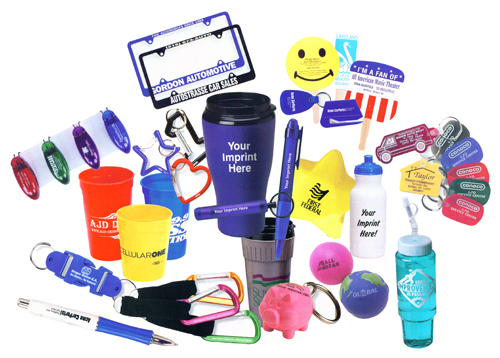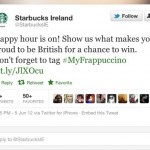From can koozies to stress balls to your basic number 2 pencil, promotional items are an integral part businesses advertising and marketing plans across the globe. Millions of promotional items, also known as “swagâ€, are given out every year. Promotional items first appeared in the early-18th century, when George Washington used small bronze pins to promote his re-election campaign in 1789.
According to the Promotional Products Association International (PPAI), there are more than 22,000 promotional item distributors and 4,800 manufacturers. These manufactures are successful for one reason: promotional items work. In a PPAI study, 94 percent of respondents said they could successfully recall a promotional product they had received in the past two years; 83 percent said they liked receiving promotional products; and 69 percent said they kept promotional products in their homes or offices. Compared to other forms of advertising, 20 percent said they made a purchase after receiving a promotional item whereas only 4 percent said they purchased after viewing an ad online!
Now that you’re sold on the importance of promotional items in marketing, here are some guidelines for choosing the right promotional product for your business or brand.
Connect Your Brand with Each Promotion
Almost any product under the sun can be turned into a promotional item, but make sure the item you choose is connected in some way with your brand. If you’re a tech company, think branded card readers, USB mug warmers or smart phone cases. Magnet clips, pizza cutters or tape measures might be the perfect fit for a real estate business. Health care and hospitals could go with pill dispensers, first aid kits or hand sanitizer. Choosing a product that reflects your industry can help your customers connect with your brand.
Choose Functional Items
People keep promotional items that they can use. To successfully market your brand, your promotional item has to be of some use to your consumer. Ink pens tend to stick around in offices, and refrigerator magnets with helpful information in addition to your branding (such as a directory of local numbers associated with your industry.) If you have the budget, think about a bigger item that’s used frequently, like an umbrella or high-quality tote. Choose a product that feels like a useful gift rather than a throw-away advertisement.
Go for High-quality Small Items
While it may be tempting to order 5000 pencils or plastic cups emblazoned with your logo for next to nothing, think twice before placing that order. Choose smaller (or smaller quantity) high-quality items in lieu of larger (or larger quantity) low-quality items. If you give away cheap or poorly-made promotional items, people may associate the quality of the items with the quality of your business – a huge negative from a branding perspective.
Make it Pop
Promotional items should have a great design and colors, but should also be unique and interesting. What products would you keep around? What would you show to your friends? Eye-catching and unique promotional products are more likely to stick around and be shown off, which increases the prominence of your brand – and the likelihood other customers will see it.
Consider Your Promotional Item’s Exposure
Along with being functional, tied to your brand, high quality and eye-catching, your promotional item needs to have maximum exposure. Think about how long your item can be used. Avoid perishable or food items because they will be gone quickly. Fragile or glass items can break easily, and seasonal items may only be used a short amount of time. Also stay away from extremely personal promotional items. The goal of using promotional items to market your brand is so that each piece can be seen — and that won’t happen if your promotional item is tucked away in a cabinet or drawer!
About the Author: when Steven Payne isn’t reviewing in-pack promotional items, he is actively engaged in the marketing and advertising blogosphere keeping his readers up to date and informed!



Pingback:Are You Using These Social Media Tools? | Diamond Website Conversion
Pingback:Go Guerrilla: Innovative Ways to Market Your Business on a Budget - Small Business News from 123Print
Pingback:Why Custom Hoodies Are For Everyone - Jen's Journey